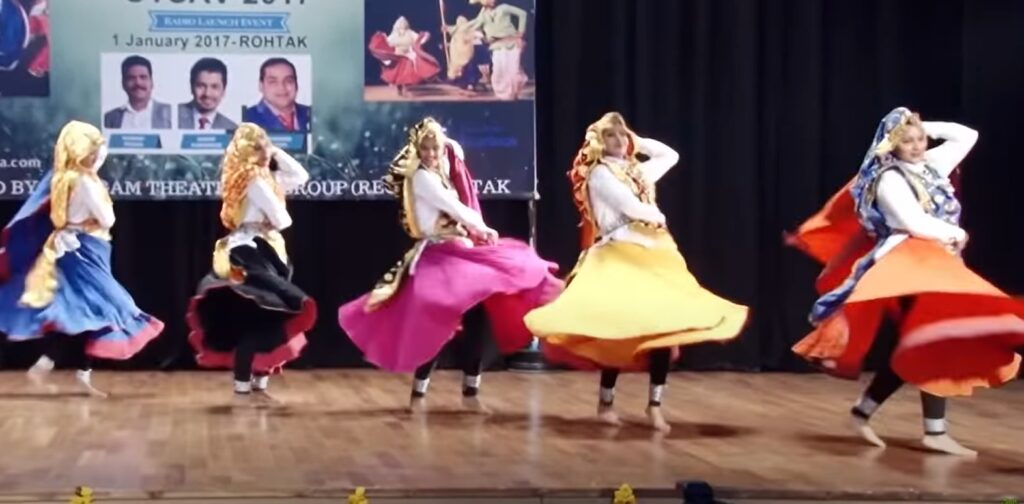Gugga folk dance is not like any other religious folk dance. Gugga has been passed down from generation to generation. No one knows the exact time of its origin but it can be traced down as far as Mahabharata. It has its specialties which lie in its way of devotional activities.

Gugga Dance Origins
The folk dance of Haryana, Gugga is a religious dance. The interesting part of this folk dance is its name. Gugga is the name of the religious figure devotees worship in this dance. He is also known by the names Zahir Pir, Guru Gugga, and Bagarwalla. He is worshipped all over the state which spread in the nearby states as well. Another amazing fact about this dance is that it does not divide two communities instead it brings them together. Hindu and muslins both worship Gugga Pir, the devotional figure of the dance.
A group of worshippers takes part in the dance performance. Five bhagats are the main dancer. The dancers need to carry their own instruments such as Thali, Chimta, Deru, etc. They create an exciting environment by beating these instruments.
Gugga Pir
Gugga Pir was born on Bhadon Naomi in Bikaner Rajasthan. The day of his birth is celebrated as Gugga Naumi in some states of north India. According to state tales, Gugga married the daughter of Raja Sanjha, Kumari Sirial of Kamrup.
One or two weeks before Gugga Naumi his devotees join in a procession led by a Bhagat who carries Gugga Kichhari. It is a long bamboo stick decorate with garlands, colorful clothes, and fans. Songs are sung in the praise of Gugga. Some folk songs praise the lost heroes of the nation. The dance can be seen during the month of Bhadon. The dancers are only male no females are allowed to participate in this devotional dance.

Pingback: All Folk Dances of India - Auchitya